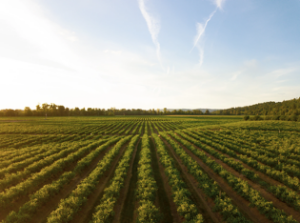APPLICATIONS:
- Development of genetically modified crops with increased yield, pest resistance, and improved nutritional content
- Development of crops with increased resilience to climate change-induced environmental stresses
- Engineering crops for biofuel production by optimizing growth rates and increasing lipid or carbohydrate content
ADVANTAGES:
- Transform traditionally recalcitrant fungi, plants, and other eukaryotic organisms
- Potential to streamline transformation of eukaryotic systems
- Allows for temporal control of gene expression through the inducible promoter
- Lowers the metabolic burden on the host due to expression of only vir genes necessary for transformation
BACKGROUND:
The VirA/G regulatory system is pivotal for Agrobacterium-mediated transformation, a method utilized to introduce new genes into plant and fungal cells. It requires disarming the two-component VirA and VirG regulatory system naturally encoded on the Ti plasmid. The system triggers the expression of a suite of vir genes controlled by a single regulator that facilitate the processing, transfer, and integration of T-DNA into the plant or fungal genome.
Despite its widespread use, the VirA/G system presents several challenges: it is limited to certain host species, the efficiency is dependent on the strain of Agrobacterium used, precision control is challenging, and the metabolic demand on the host is high.
TECHNICAL DESCRIPTION:
JBEI researchers have developed a refactored, minimized virulence pTi plasmid of Agrobacterium containing only essential genes for plant and fungal transformation that are controlled by an inducible promoter. This innovation allows for the interchange of vir alleles from distinct Agrobacterium isolates, directly assessing their impact on transformation efficiency. Notably, strong expression of virD12 yielded a 135% improvement in transformation efficiency, and lower expression of virD4 improved it by 72% in N. benthamiana leaves compared to wild-type. In fungal transformation of Rhodosporidium toruloides, the virD5 gene that was previously thought to be dispensable was shown to increase efficiency from 5% of wild-type to 40%.
By dividing the virulence plasmid into smaller, independently replicating plasmids with fewer vir genes controlled by an inducible promoter, the researchers created a platform separate from the native VirA/G system. This approach expands the possible genetic space of Agrobacterium strains that exist naturally. In the future, there will need to be further optimization to overcome difficult to transform species, which may enable researchers to develop strains to improve host-specific transformation and bypass the need to identify the most compatible Agrobacterium strain for each host species.
The platform’s design allows for precise control of vir gene expression levels in different hosts via the inducible promoter, enhancing the likelihood of successful DNA transfer and integration. This method, with its targeted approach and smaller plasmid size, reduces the metabolic burden on Agrobacterium and that can affect transformation efficiency and host health.
DEVELOPMENT STAGE:
Proven Principle
PRINCIPAL INVESTIGATORS:
- Mitchell Thompson
- Allison Pearson
- Patrick Shih
FOR MORE INFORMATION:
STATUS:
Patent Pending
